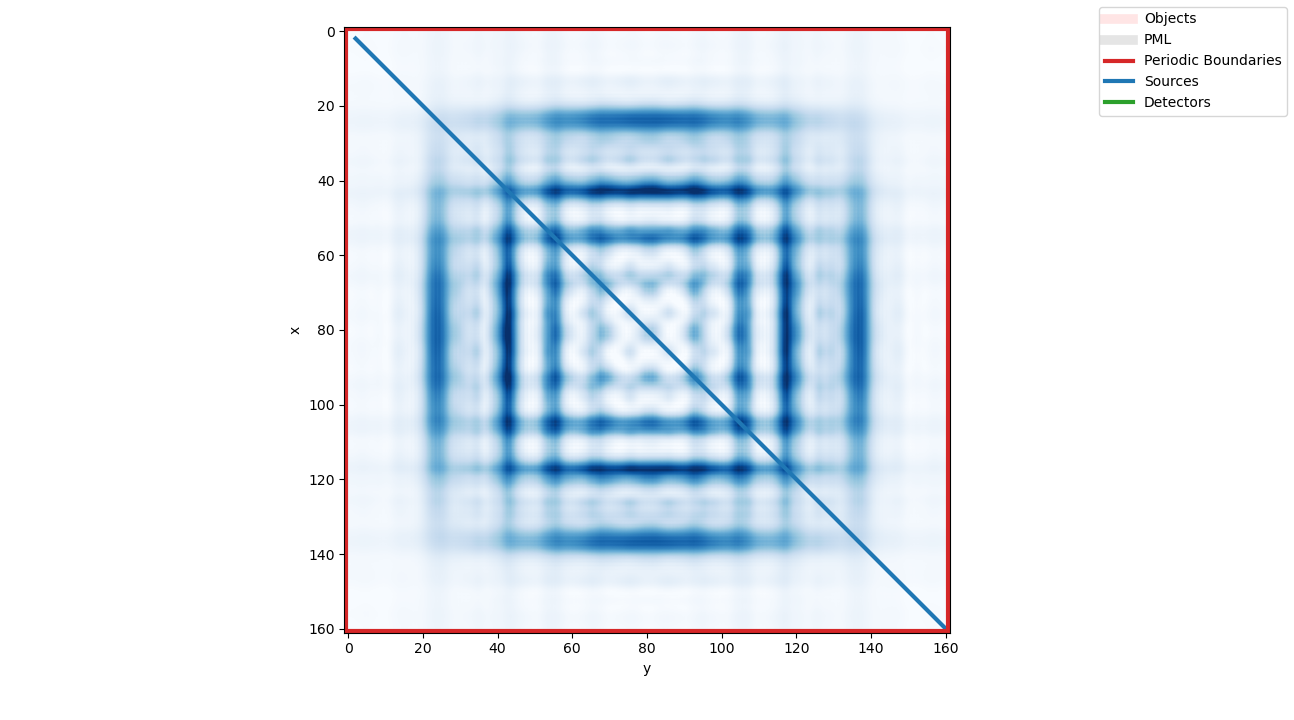Hmm, I'm not sure what the intended behavior is supposed to be, but could it be that the light of the 'neighboring' cells (remember: you're using periodic boundaries) is starting to interfere with the light in the current cell? Look for example at the light at timestep 90 (grid.run(90)):

This looks like a proper source to me (admittedly, not exactly what I would expect from a PlaneSource, I will have to look into that).
However, at timestep 100 (grid.run(100)) we see that the fringes because of interference with the light of neighboring cells start to appear:

To prevent these fringes, use PMLs everywhere:
grid[0:10, :, :] = fdtd.PML(name="pml_xlow")
grid[-10:, :, :] = fdtd.PML(name="pml_xhigh")
grid[:, 0:10, :] = fdtd.PML(name="pml_ylow")
grid[:, -10:, :] = fdtd.PML(name="pml_yhigh")
grid[:, :, 0:10] = fdtd.PML(name="pml_zlow")
grid[:, :, -10:] = fdtd.PML(name="pml_zhigh")After 100 timesteps:

That said, you'll still see artifacts after 300 timesteps because the PML is never perfect and in practice you'll always have reflections at the PML:

To reduce those artifacts, increase the simulation area and the thickness of the PML:

As you can see, the fringes never completely go away, likely because of the naive PML implementation. If someone wants to attempt to implement a better PML, be my guest ;-)


I'm trying to define a plane source such that it outputs a plane wave, but I'm getting some odd-looking outputs. The following code seems to produce some pretty heavy fringes of some sort. Any thoughts? Ideally it would produce a smooth plane wave. Thanks!